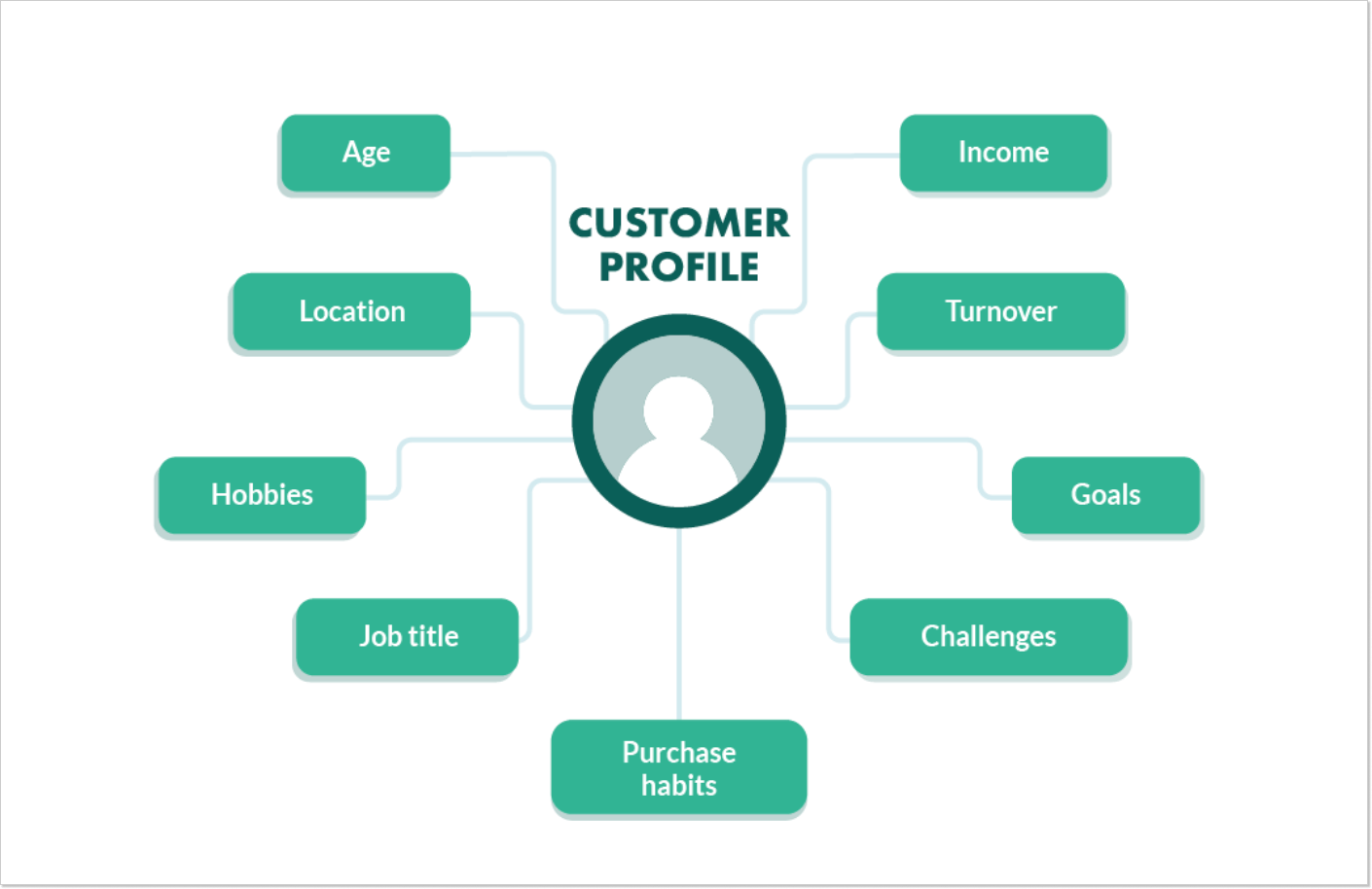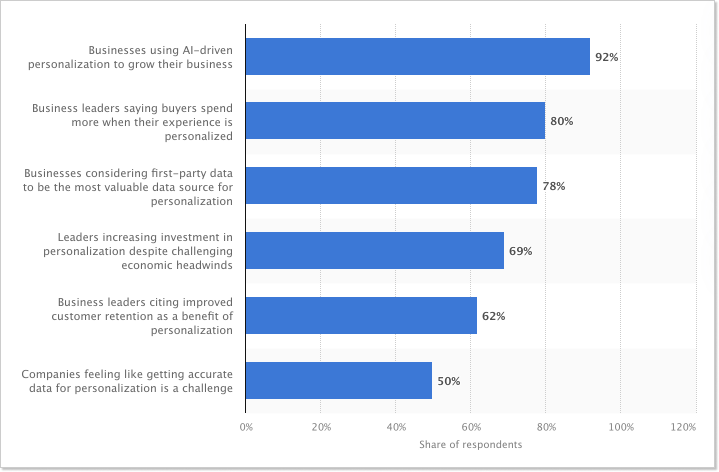What Is Customer Analysis: The Complete Guide
Discover the significance of data and customer analysis for your business. Learn what you need to begin effective customer data analysis.
Written by Ivan Burban

Understanding customers and predicting customer behavior can be a challenging task.
On one hand, you have multiple means of interaction and communication with customers. On the other hand, there are different types of customers with individual needs and preferences. Besides, the market tends to change rapidly, and new competitors appear.
All this increases the pressure of answering questions like who my customers are and what they want.
To deal with this properly, we’d like to introduce you to customer analysis. This activity explores customer pain points, their preferences, and factors influencing buying choices. It is driven by a thorough analysis of customer data.
In this article, we’ll overview all the aspects of customer data analysis.
The definition of customer analysis
Customer analysis is a process of utilizing versatile data to get knowledge about customers. The main goal is to identify your target audience and understand what your customers need.
It combines both qualitative and quantitative research. The process involves an in-depth evaluation of potential customers and existing ones. This lets you clearly see the audience’s behavior – buying criteria, average transactions, etc. Based on this, you can draft customer profiles.
By having customer profiles, companies can better focus on engaging with a target audience and attracting valuable customers. This also opens the door to adjusting marketing strategies and messaging.
What is a customer profile?
A customer profile represents a detailed description of your potential customer. It displays the characteristics of individual clients and groups. Partially, a customer profile consists of demographic information such as age, gender, education, etc. It also includes geography and psychographic information, like behaviors and interests.
Another important point here is Ideal Customer Profiles (ICPs). It describes a potential client who would benefit from a company’s products or services the most.

Customer analysis vs customer analytics
Customer analysis and analytics are about understanding clients. Yet, they assess it from different angles.
Customer analysis identifies your customers, grasps reasons behind customer actions, and evaluates their preferences. So, it opens a holistic picture of your customer base and buyer personas.
Customer analytics, in turn, is more about the practical evaluation of customer data. It operates within measurable metrics and focuses on getting actionable insights from those numbers to improve your product or service. For instance, this practice can help you improve customer satisfaction in the B2C market. In the B2B market, it’s a way to predict churns or increase customer lifetime value. Consequently, by understanding these metrics, businesses can not only improve customer retention but also find B2B leads that align with their ideal customer profile, thereby maximizing their sales efforts.
You see that these practices are interconnected. In fact, customer analytics is a technique within the broader analysis. But using both offers you comprehensive customer information, leading to effective business decisions.
Importance of customer analysis for businesses
Among several benefits, this business process can help you in four substantial ways.
Understanding of customers
It’s a dynamic world in which customers’ preferences change often. So, any business has to check those trends. Exactly this is a benefit of customer behavior analysis. It informs companies about client preferences and buying patterns: product usage history, transaction volume, and loyalty metrics.
Businesses that know their customers well can outperform competitors and succeed in acquisition, retention, and other areas.
Personalized customer experience
Through customer behavioral analysis, businesses gain the ability to create personalized customer experiences.
With a detailed analysis, you can segment users based on their unique traits and interactions with the brand. Respectively, companies can tailor their marketing and positioning to resonate with the audience by knowing the differences between customer groups.
As a result, such a personalized experience can improve the customer journey. Also, it enables businesses to address customer needs proactively, reducing churn. Here are a few more important points about personalization based on recent research by Statista:

Product functionality and features
Creating products often arises from solving customer needs. Solid data points from customer analysis guide smarter product improvements and innovations. Those can include lots of aspects, from pricing policies to reward programs. You can also make product development and customer service decisions using customer personas.
Here, customer feedback is crucial. You need to hear the voice of customers. Decision-makers can prioritize product features, improve service, and more based on customer feedback. Utilizing customer feedback fosters positive customer relations as well.
Targeted marketing
Studying customer data helps companies adjust their marketing strategy. As simple as that: when introducing a product feature or other initiative, you must know your target audience.
From various marketing campaigns and hypothesis testing, organizations receive a lot of customer data. Gathering this information and conducting analysis helps businesses to market more effectively and target campaigns at specific customer groups. Eventually, it can be impactful in terms of ROI and annual revenue.
7 Steps to run an effective customer analysis
Conducting customer behavioral analysis involves important steps. You start with customer data collection and finish with an application of the information you got. So, here is a checklist to help you initiate the process.
Analyze your customer base
The first step in the analysis of customers has to be structuring your existing customer database. Collect data from sources such as customer service software, CRMs, etc. You can use data integration and reporting tools for that. For example, with a CRM dashboard template, you can have all customer data in one place, ready for analysis. This data may include relevant information – from basic contact info to transactions.
The following step is identifying patterns and segmenting customers. Look for common points and behaviors among your customers. Such parameters should include:
- Demographics
- Geography
- Means of communication
- Preferable items or services
The full set of parameters for your customer segmentation may look like this:

Based on the patterns, you can create customer segments. Make sure you complete this step, as it is a solid foundation for understanding your customer database.
Gather customer feedback
One more source of analysis is direct customer feedback. You can effectively collect it through in-app surveys, satisfaction surveys after calls through contact center software, CustDev meetings, and others. In-app messages/emails to invite and thank users, offering small rewards (like gift cards), can boost participation.
You can also get many valuable insights by inviting customers to one-on-one interviews. You can learn about customers’ values, pain points, use cases, and app/product experiences. Also, in the entire customer journey analysis, sharing NPS surveys with customers can help you track your service satisfaction rates of particular customer segments.
It’s important to work with customer feedback constantly. This helps you keep buyer personas relevant and avoid your marketing and product features becoming outdated.
Get customer insights from product analytics
Product analytics is a thorough overview of your product and how customers use it. It provides a lot of valuable insights: user behavior, activation and adoption rates, tech product performance, etc. Apart from that, you can see which customer segments convert and which CTAs work best.
Product analytics is beneficial in identifying a product’s weak and strong sides, improving that underdeveloped functionality. Also, by utilizing product data, you can evaluate the user journey. For example, you can identify noticeable drop-off points during onboarding. All these actions allow for targeted marketing efforts and A/B testing in user onboarding.
In brief, your product analytics can be invaluable for initiating a customer data analysis with further customer profile creation and segmentation.
Use team knowledge
An essential step is gathering the domain knowledge of your team. Each department within your organization views customers differently. Having your team’s vision about your customers ensures you won’t overlook important details.
Such details can come from:
- Customer support team. This team works with users directly, which gives you hints about customer frustrations and expectations. Plus, feedback from your support team can unveil hidden pain points.
- Sales team. Except for existing customers, sales professionals work with customer profiles. Sales team feedback can help polish customer profiles and provide a competitive advantage for each customer segment.
- Marketing team. The marketing teams can share valuable information about customer engagement, messaging, positioning, competitors, market segmentation, etc. Such data opens the door to accurately describing your ICPs.
- Customer success team. To ensure customer loyalty, customer success managers often do a lot for customer retention. With their contribution, you can evaluate customer satisfaction, personalization, feature requests, and churn reasons.
Leveraging team knowledge, in general, is a way to open small yet crucial details about your customers (existing and potential) and enrich your customer behavior analysis.
Explore additional channels for analysis of customers
It’s not only your team that can help you get information about your product and customers. It’s important to enrich your data accuracy by exploring other channels.
These three channels can help you greatly:
- Website analytics. Use tools for website analysis to identify how visitors interact with your landing pages, blog articles, CTAs, average time spent on a page, most converting/most visited pages, and more. This data impacts conversions, content marketing efforts, and other marketing channels.
- Product reviews. Review platforms like G2, Capterra, Trustpilot, and others provide much information about your product and competitors. You can monitor the overall customer satisfaction rate, and by interacting with customers there, you can improve it.
- Social media. Periodically assess your social media engagement, post’s reach, and content performance. Using sentiment analysis tools, track customer sentiments about your brand and competitors on social media. You must check tagged and untagged mentions across X, Facebook, LinkedIn, Reddit, others. Social listening shows common complaints and praised features.
These additional sources help to grasp not only customer needs and preferences. This is a great way to monitor competitors and market dynamics.
Create and focus on buyer personas
After analyzing customer data, it’s time to create buyer personas. Buyer personas represent your customer groups, which gives you a good behavioral and psychological understanding of prospective customers. Besides, they help to explore separate customer profiles and segments.
To create user personas, you need:
- identify business challenges and opportunities
- develop detailed profiles for each segment based on available data (demographics, pain points, etc.)
- create a relatable story for each persona, including name and other information.

To avoid complexity and ensure each persona provides value, keep their number up to 7 max. You must also review your buyer personas to reflect changes in your product, market, and customer base. Performance data can help to refine your personas.
Make customer data analysis recurring
Firstly, congrats on conducting your customer analysis! However, due to buyer patterns and market fluctuations, you should make your analysis periodical.
To make this process effective, luckily, we have automation solutions. For instance, you can use customer communication management software like HelpCrunch. This is an excellent solution for keeping all the customer communication and interactions in one place. With HelpCrunch, you can quickly react to customer feedback as well.
To automate the gathering and visualization of customer data from various sources, you can try Coupler.io or alternatives. It will give you access to fresh data at regular time intervals.
The last thing to remember is that you should share the results of customer data analysis across the teams. It helps to align their strategies and be on the same page within an organization.
What to expect from customer analysis soon?
Foremost, we all experience the impact of data protection and processing when working with customer data. This will become even more strict, so you need to comply with all the rules, which affects the process. Still, this is a must.
Also, you can see a growing demand for predictive analytics empowered by AI to react to changes and challenges on time.
As we mentioned above, omnichannel analysis is a big thing now. You can’t skip evaluating some channels; you have to assess data from different sources.
To stay efficient with customer behavioral analysis, a need for real-time evaluation is essential as never before. It saves businesses time to react to changes and manage risks. Also, it helps to provide customers with immediate solutions, keeping them happy.
Final thoughts
Customer analysis is worth spending time and resources on. Yes, it’s a compound and recurring process in which you monitor many channels and assess tons of data. Even though some information may seem apparent, there might be critical details hidden from the first glance.
That’s why you must treat this activity seriously, making it a step-by-step process involving different specialists. But without studying your customers, it’d be hard for your business to succeed.
So, we hope this guide will assist you in starting with customer analysis and refining this process.





